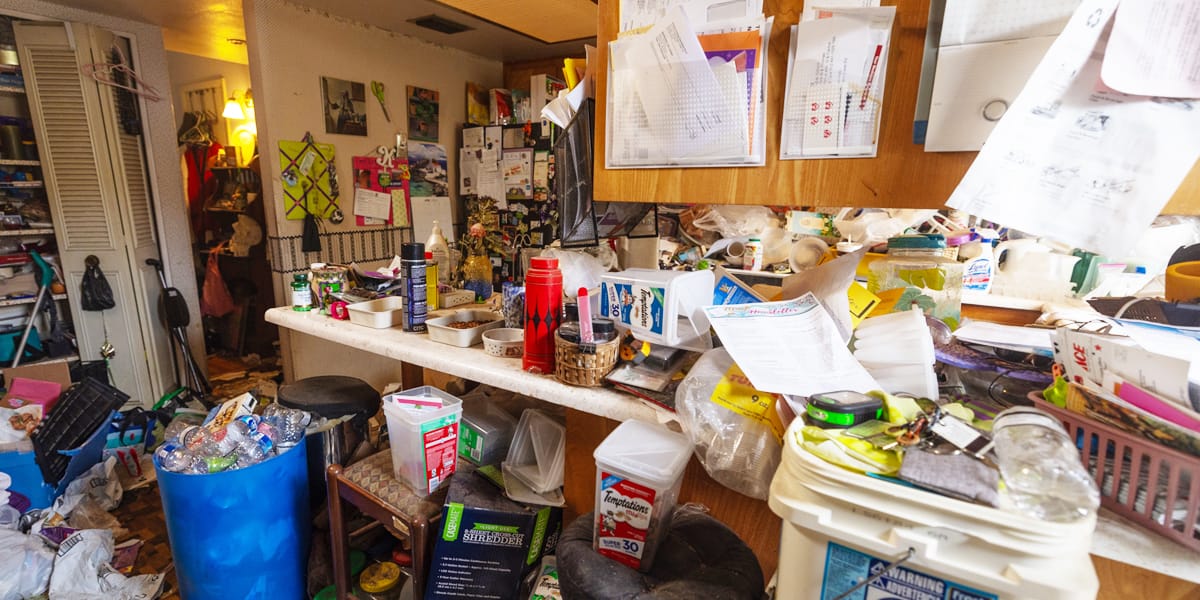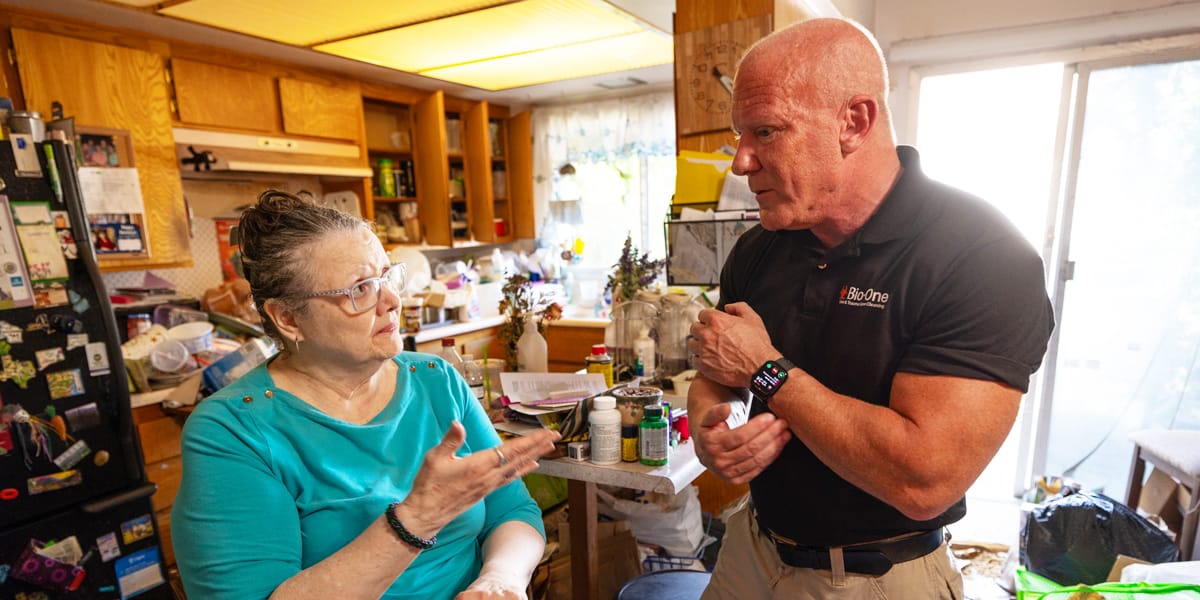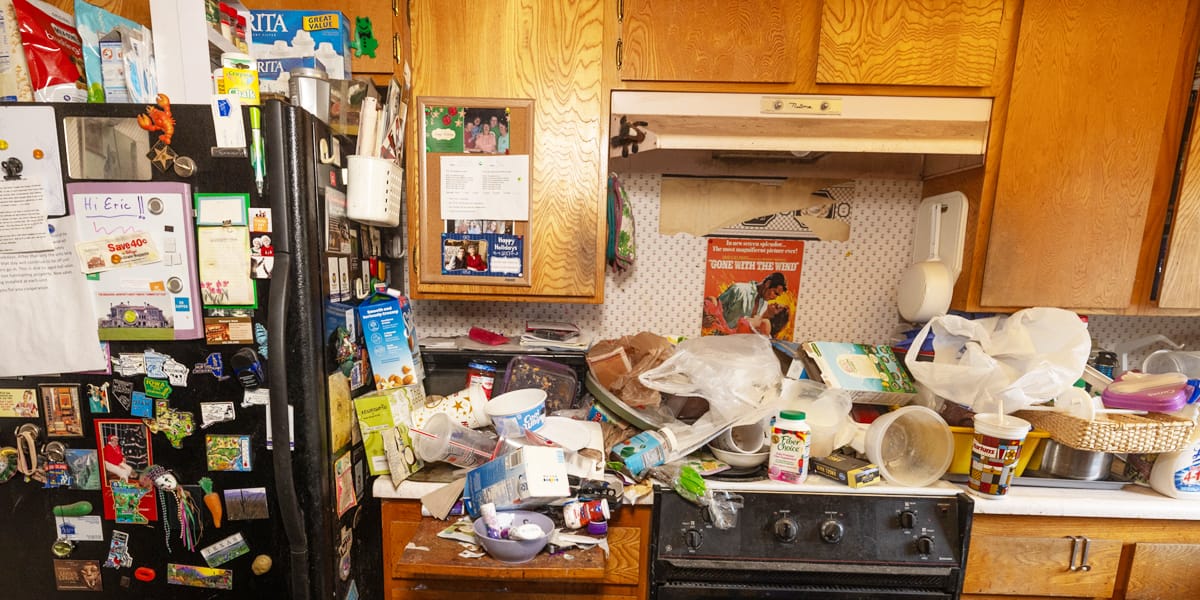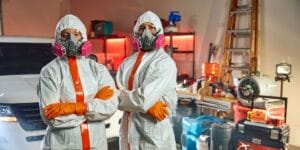
Cleaning up after hoarding isn’t just about tossing junk into a dumpster. It’s about restoring a home—and helping someone take back their life. That’s why this job requires more than a broom and a couple of trash bags.
At Bio-One, we’ve seen firsthand what hoarding really means. We know it’s not just a mess. It’s emotional. It’s complicated. And it often hides some very real dangers.
Here’s why hiring Bio-One is the right call—and why everyday cleaning crews and junk removal services just aren’t enough.

Every successful hoarding cleanup starts with one thing: a plan. But not just any plan—a personalized, compassionate roadmap designed around your unique situation.
At Bio-One, we don’t just show up with trash bags and gloves. We take the time to understand the home, the person, and the emotional weight behind it all.
Here’s how our thoughtful, professional approach sets us apart:
Trying to tackle a hoarding situation without a plan is like trying to fix a house without blueprints. A junk removal service may clear things out, but it won’t solve the deeper problems. We will.

Clearing a hoarded home isn’t just time-consuming—it’s physically exhausting. What appears to be a few rooms of clutter can quickly become a grueling, multi-day challenge. This isn’t your average “spring cleaning.”
Here’s what you’re really up against:
What’s manageable in the beginning can become overwhelming fast. Even seasoned cleaning crews often underestimate the time required for hoarding cleanup and the demands it poses once the work begins.
At Bio-One, we come fully equipped with the tools, protective gear, and trained professionals to power through the most intense labor. We pace the work strategically, protect everyone’s safety, and make real progress without cutting corners.
This isn’t just about strength—it’s about stamina, strategy, and knowing how to get the job done right.
Behind the piles, underneath the clutter, and deep within hoarded homes, dangerous contaminants are often quietly festering. These aren’t just cleaning challenges—they’re serious health threats.
Most people think hoarding is just a matter of a mess. But in reality, it’s often a biohazard scene waiting to be discovered.
Here’s what might be lurking just out of sight:
All of these are considered biohazards—and they’re not something an average junk removal crew or cleaning company is trained (or legally allowed) to handle.
At Bio-One, we’re certified to clean, disinfect, and properly dispose of hazardous materials. Our teams follow OSHA standards, use full protective equipment, and know how to handle even the most extreme situations with professionalism and care.
This isn’t a job for amateurs. If biohazards are involved—and they often are—you need a team that knows what they’re doing and has the certifications to prove it.

When a home becomes overwhelmed by clutter, it doesn’t just feel uncomfortable—it becomes the perfect environment for pests and rodents to move in and multiply.
All it takes is a little food waste, some moisture, and a few dark hiding places—and suddenly you’re dealing with an infestation that’s hidden in the walls, under furniture, and deep within the piles.
Here’s what’s commonly found in hoarded environments:
These pests don’t just damage property—they carry diseases like salmonella, leptospirosis, and hantavirus. Their waste can become airborne, and their presence can quickly spiral into a full-blown health crisis.
The truth? Pest problems in hoarded homes are rarely just a matter of extermination. Once pests have contaminated the environment, specialized cleaning is required to safely remove all traces and restore the space to a livable condition.
At Bio-One, we don’t just deal with the aftermath—we know how to spot the signs of infestation early, contain the spread, and safely remove biohazards left behind. We work discreetly, using professional-grade equipment and proper safety gear, so you don’t have to risk your health or well-being.
In a hoarded home, mold is more than just a patch of discoloration—it’s a growing, hidden danger that’s often overlooked until it becomes a serious health risk.
With so much clutter packed into every corner, proper airflow is restricted. That means moisture lingers, leaks go unnoticed, and humidity builds up. And mold? It thrives in those exact conditions.
Here’s why mold is such a serious concern in hoarding situations:
Cleaning up visible mold is one thing. However, in hoarded homes, mold is rarely limited to the surface. It’s often embedded deep in the environment, and removing it safely requires proper containment, specialized PPE, and professional remediation tools.
At Bio-One, we’re trained to detect, isolate, and eliminate mold as part of our hoarding cleanup process. We know where to look, how to test, and when it’s time to bring in mold remediation protocols. We also take steps to prevent regrowth, helping restore a safe and breathable living space.
When most people think of hoarding, they picture stacks of newspapers, rooms overflowing with clutter, and hallways cluttered with items. What they don’t picture—but absolutely should—is the invisible cloud of contaminated air hovering over it all.
Poor air quality is one of the most hazardous and least understood risks associated with hoarding cleanup. Every time you move a box, lift a rug, or shift a pile, you release pollutants that have been building up for years, sometimes decades.
Here’s what gets stirred into the air during a hoarding cleanup:
Prolonged exposure to this mix can lead to headaches, respiratory infections, asthma flare-ups, dizziness, and even long-term lung damage. For people with allergies, pre-existing conditions, or weakened immune systems, it can be dangerous or even life-threatening.
That’s why Bio-One technicians wear full protective gear on every job—including biohazard suits, respirators, eye protection, and gloves. We don’t just clean—we do it safely, both for ourselves and for everyone who will re-enter the space.
We also utilize professional-grade air scrubbers, HEPA vacuums, and deodorizers to enhance the air quality as we work actively, because it’s not truly clean until it’s safe to breathe.

Behind every cluttered room and overstuffed hallway is a risk most people don’t consider—getting seriously injured while trying to help. Hoarding environments aren’t just hard to navigate; they’re physically dangerous, especially for anyone without the right training, equipment, or experience.
We’ve seen it happen far too often: someone with the best intentions enters a hoarded space to begin cleaning, only to walk away with a serious injury or a trip to the emergency room.
Here’s what makes these environments so hazardous:
In extreme cases, these conditions can lead to fractures, sprains, head injuries, or worse. The danger isn’t always visible, and one wrong move can lead to lasting consequences.
At Bio-One, we take safety seriously. Every cleanup is performed with full protective gear, including hard hats, puncture-resistant gloves, steel-toe boots, and back support. We use the right tools, move strategically, and always work as a team to ensure safe progress.
Your heart may be in the right place—but your body could pay the price if you go it alone. Let the professionals handle the heavy lifting—literally.
When a home is filled with clutter, the fire risks don’t just increase—they multiply exponentially. From stacks of flammable materials to blocked exits and overloaded electrical outlets, hoarded homes can become fire traps waiting for a single spark.
What makes hoarding situations so dangerous during a fire?
The result? Fires in hoarded homes spread faster, burn hotter, and are far more deadly.
At Bio-One, we don’t just clean up clutter—we help prevent tragedy. By restoring open pathways, removing excess materials, and identifying key fire hazards during the cleanup process, we dramatically reduce the risk of fire and create a safer space for everyone.
If someone you love is living in a hoarded environment, acting now could save a life later. A clear space is a safe space—and we’re here to help make that happen.
It’s easy to focus on the visible mess in a hoarded home, but what’s happening beneath the clutter can be even more dangerous. Years of neglected maintenance, trapped moisture, and excessive weight from accumulated belongings can cause severe structural damage that’s often hidden until it’s too late.
These aren’t just cosmetic issues. They pose safety hazards that can compromise the integrity of the entire home.
Here’s what we frequently encounter during hoarding cleanups:
In some homes, the damage is so severe that certain areas become unsafe to enter. Unfortunately, most junk-hauling crews won’t notice—or worse, won’t care—about these risks. They’re there to move stuff, not protect the property.
At Bio-One, we assess more than just the mess. We recognize the signs of serious structural issues and never proceed if it puts someone at risk. If needed, we’ll stop the cleanup and recommend licensed contractors or specialists to address the problems safely and correctly.
We treat every home with the same care and caution we’d want for our own. Because restoring a home doesn’t just mean clearing space—it means making sure it’s safe to live in again.

When someone you care about is struggling with hoarding, stepping in to help is the right thing to do. But without the right approach, even the best intentions can cause deep emotional pain and strain the relationship for years to come.
That’s because hoarding is rarely just about clutter. It’s about fear, trauma, grief, and loss. For the person who hoards, those piles aren’t just junk—they’re comfort, control, or connection. Having someone touch one's belongings without permission can feel like an invasion.
Here’s what we’ve seen time and time again:
That’s why Bio-One approaches every hoarding situation with more than just tools and trash bags—we bring compassion, patience, and a neutral, calming presence.
Here’s how we help preserve relationships and reduce emotional strain:
We’re not here to rush a process that takes time. We’re here to help everyone involved move forward together, with dignity, understanding, and as little conflict as possible.
Because cleaning a home is one thing, helping a family heal is something else entirely.
Hoarding isn’t just about piles of stuff. It’s about stories, struggles, and people who need help reclaiming their space—and sometimes, their life. That kind of transformation takes more than cleaning supplies and a crew with a truck. It takes compassion, patience, and a team that truly understands.
At Bio-One, we’re not just here to remove clutter. We’re here to restore peace of mind, rebuild safety, and offer dignity to the people at the heart of it all.
If you’re facing a hoarding situation—whether it’s your own, a loved one’s, or a client’s—you don’t have to do it alone.
Call Bio-One today. We’re ready to help—gently, respectfully, and without judgment. This isn’t just cleanup. It’s a clean start. And we’ll be with you every step of the way.
Bio-One specializes in hoarding cleanup, which goes far beyond surface cleaning or hauling away items. We assess safety risks, identify biohazards, and create a customized plan that considers emotional, physical, and environmental factors. We’re trained, certified, and compassionate—and we never judge.
Hoarded environments often contain hidden risks, such as mold, pests, structural damage, and biohazards (including feces, urine, and decomposing food). Attempting to clean up without proper equipment and training can lead to injury or illness. Our team utilizes protective gear and adheres to strict safety protocols to ensure the job is completed safely and thoroughly.
It depends on the size of the property and the extent of the hoarding. Some jobs can be completed in a single day, while others may take several days or longer. We’ll provide a clear timeline after our initial assessment and work at a pace that’s comfortable for you or your loved one.
Yes. We approach every situation with compassion and respect. We’re here to support—not shame—those struggling with hoarding. We listen, explain each step, and work at a pace that protects emotional well-being. Our neutral presence can also help reduce tension between family members.
We remove trash, damaged items, expired food, contaminated materials, and any other items that pose a health or safety risk. We always consult with the client about what should be kept, donated, or discarded. Valuables and sentimental items are handled with care and preserved whenever possible.
We’re trained to deal with mold, odor, and indoor air quality issues. During cleanup, we may use HEPA filters, deodorizers, and industrial-strength disinfectants to improve air quality and remove lingering odors. Mold is common in hoarded homes—and we know how to identify and safely treat it.
Yes. Rodents, roaches, flies, and other pests are common in hoarding situations. We remove nests, droppings, and contaminated items, and thoroughly clean and disinfect affected areas. If needed, we can recommend pest control partners to assist with pre- or post-cleanup services.
Absolutely. Animal hoarding creates very sensitive and hazardous conditions. Our team is experienced in handling these situations with discretion and care. We safely clean and disinfect areas affected by urine, feces, and decomposing material, while preserving as much of the home as possible.
In some cases, yes—especially if there is structural damage or biohazard contamination. We can help you navigate insurance claims and provide the necessary documentation to support the process. We’ll also clearly explain your options, including payment plans if needed.
Yes. We understand the stigma that can surround hoarding. That’s why we use unmarked vehicles (upon request) and work with complete discretion. We don’t share information, take photos without permission, or speak publicly about any job. Your privacy is always respected.



